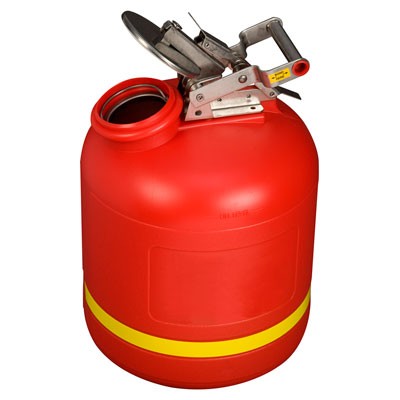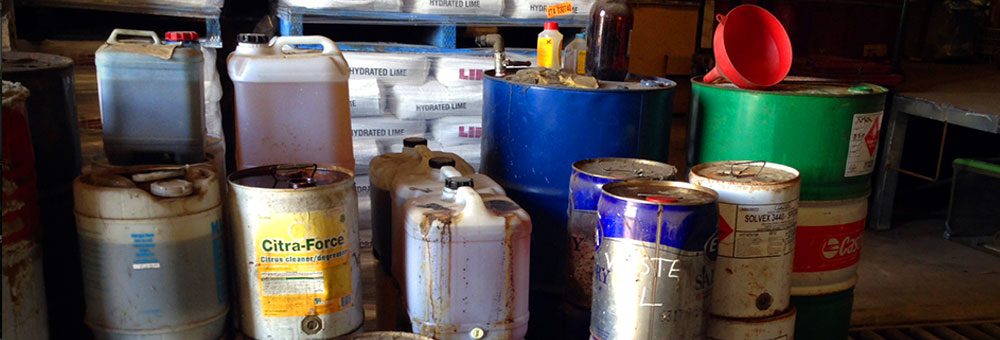Comprehensive Liquid Waste Disposal: Solutions for Homes and Services
Comprehensive Liquid Waste Disposal: Solutions for Homes and Services
Blog Article
How Fluid Garbage Disposal Works: A Comprehensive Summary of Techniques and Technologies Employed

Summary of Liquid Waste Types
The complexity of fluid waste kinds demands an extensive understanding of their attributes and effects for disposal. Fluid waste can extensively be classified into a number of types, including industrial, municipal, agricultural, and contaminated materials. Each classification displays distinct residential properties, needing certain administration methods to reduce environmental and health threats.
Industrial fluid waste stems from producing processes and frequently contains a variety of contaminants, such as heavy metals, solvents, and natural substances. Community fluid waste, largely making up wastewater from households and business establishments, contains raw material, nutrients, and virus (industrial wastewater treatment). Agricultural fluid waste, including drainage from farms, might include plant foods, pesticides, and pet waste, presenting risks to water top quality and communities
Unsafe liquid waste is characterized by its poisoning, sensitivity, or possible to cause harm. Comprehending these varied fluid waste kinds is essential for establishing reliable disposal methods and guaranteeing compliance with ecological laws.
Physical Therapy Methods

Testing is the preliminary action, where larger particles and debris are gotten rid of from the fluid waste making use of displays or grates. This process safeguards downstream equipment from damage and ensures smoother procedure. Adhering to screening, sedimentation utilizes gravitational pressure to separate solids from liquids. In sedimentation containers, larger bits work out near the bottom, creating a sludge layer, while the made clear liquid can be additional treated.
Filtration is an additional crucial technique that involves passing the fluid through permeable materials, such as sand or membranes, to record smaller fragments. This step boosts the high quality of the liquid, making it appropriate for subsequent therapy processes.

Chemical Therapy Strategies
Chemical therapy techniques are essential for properly managing fluid waste, specifically in attending to liquified and colloidal pollutants that physical approaches might not effectively remove. These methods utilize different chemical representatives to reduce the effects of, speed up, or change dangerous materials right into much less damaging kinds.
One common technique is coagulation and flocculation, where chemicals such as alum or ferric chloride are contributed to promote the aggregation of put on hold fragments. This process improves sedimentation, enabling easier removal of the resulting sludge. In addition, oxidation procedures, employing agents like chlorine or ozone, are utilized to damage down complex natural substances and virus, rendering Bonuses the waste safer for discharge or additional treatment.
Neutralization is an additional crucial method, which changes the pH of acidic or alkaline waste streams to neutral degrees, protecting against potential harm to downstream systems and the setting. In addition, progressed oxidation procedures (AOPs) make use of mixes of oxidants and ultraviolet light to degrade consistent contaminants, accomplishing a greater level of treatment efficiency.
Biological Treatment Processes
Biological treatment processes play an essential role in the monitoring of liquid waste by making use of microbes to break down raw material and decrease contaminant navigate to these guys degrees. These procedures can be extensively classified into aerobic and anaerobic treatments, each using details microbial neighborhoods to accomplish effective waste degradation.
Cardio therapy includes the usage of oxygen to promote the failure of organic materials by bacteria. This procedure is frequently executed in activated sludge systems, where aeration containers supply a conducive setting for microbial development, leading to the oxidation of natural toxins. The resultant biomass can be separated from dealt with effluent with sedimentation.
On the other hand, anaerobic treatment occurs in the lack of oxygen, depending on different microorganisms to break down natural matter. This method is specifically helpful for high-strength waste, as it generates biogas, an eco-friendly energy resource, while reducing sludge manufacturing. Technologies such as anaerobic digesters are often used in local and industrial applications.
Both cardio and anaerobic biological treatments not only reduce the environmental influence of liquid waste yet likewise facilitate resource recuperation, making them necessary components of lasting waste management methods. Their efficiency, flexibility, and efficiency support their extensive execution across various markets.
Arising Technologies in Disposal
Innovative methods to liquid garbage disposal are swiftly evolving, driven by improvements in modern technology and an increasing emphasis on sustainability. Among these arising modern technologies, membrane layer bioreactors (MBRs) have actually gained traction for their ability to integrate organic treatment with membrane filtration, leading to top notch effluent that can be recycled in numerous applications. MBRs make it possible for smaller sized impacts and more efficient my site operations compared to conventional systems.
One more appealing advancement is using anaerobic digestion integrated with nutrient healing innovations, which not just deals with liquid waste however likewise creates biogas and recoups beneficial nutrients like nitrogen and phosphorus. This twin advantage boosts source effectiveness and minimizes ecological influence.
Additionally, advanced oxidation procedures (AOPs) are being taken on for the destruction of intricate natural pollutants. These methods utilize powerful oxidants and catalysts to damage down impurities at the molecular degree, supplying a very reliable option for difficult waste streams.
Additionally, the assimilation of fabricated knowledge and device knowing in waste monitoring systems is enhancing operational efficiency and anticipating upkeep, causing lowered costs and enhanced ecological conformity. These innovations reflect a substantial shift in the direction of more sustainable and effective fluid waste disposal techniques.
Final Thought
In verdict, efficient fluid waste disposal demands a thorough understanding of various strategies and technologies. The assimilation of physical, chemical, and biological therapy methods makes sure the efficient administration of varied waste types. Moreover, the emergence of ingenious modern technologies improves therapy efficacy and promotes sustainability in waste monitoring practices. By constantly progressing these methodologies, it ends up being feasible to deal with the expanding obstacles related to liquid waste, inevitably adding to environmental security and source recovery.
Liquid waste disposal is a crucial facet of environmental administration, calling for a comprehensive understanding of different strategies and modern technologies customized to various waste kinds. Liquid waste can broadly be categorized into a number of types, including industrial, local, farming, and dangerous waste. Agricultural fluid waste, consisting of runoff from ranches, might consist of plant foods, chemicals, and pet waste, posturing threats to water top quality and ecosystems.
Numerous physical therapy techniques play an essential duty in managing liquid waste efficiently - industrial wastewater treatment.In conclusion, effective fluid waste disposal requires a detailed understanding of various techniques and modern technologies
Report this page